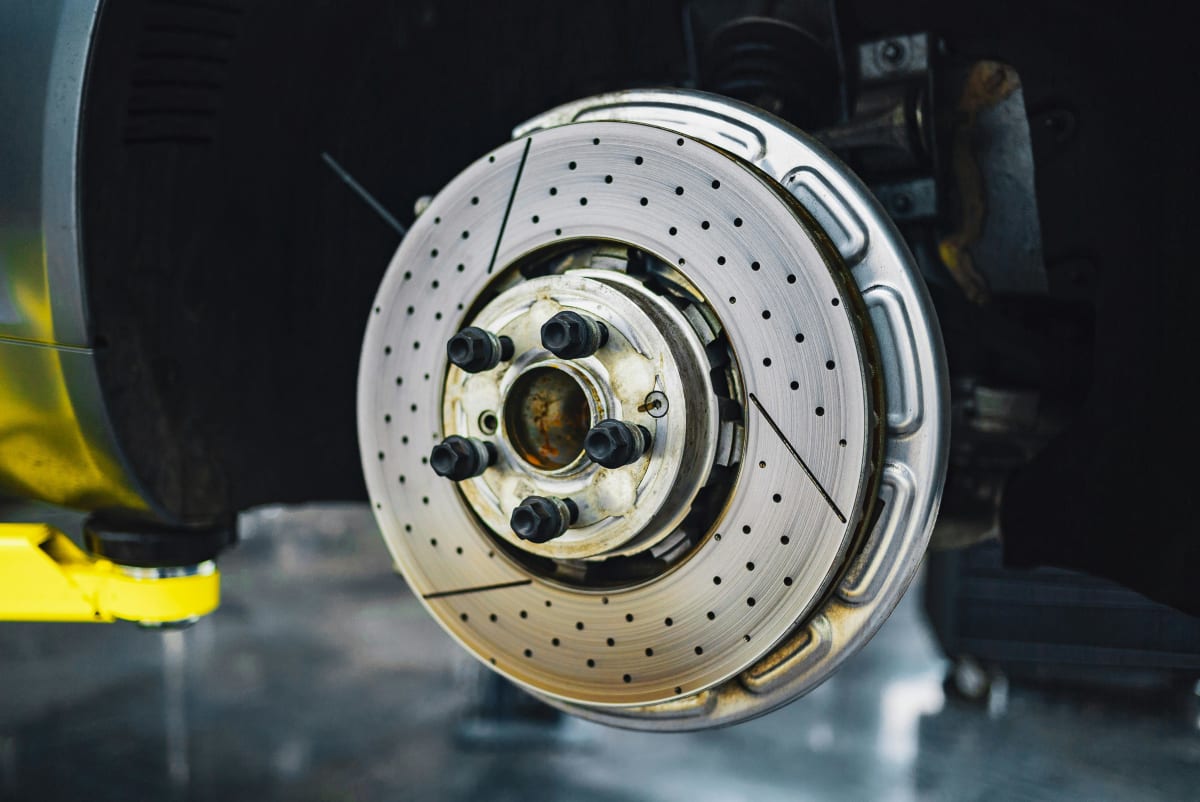Brakes are an essential component of any vehicle, ensuring the safety and control needed for a smooth driving experience. Among the most common types are disc brakes and drum brakes, each with its own set of characteristics and applications. Disc brakes, typically seen on the front wheels of many cars, offer efficient stopping power and improved performance under wet conditions. Conversely, drum brakes, often found on the rear wheels, are known for their durability and cost-effectiveness. In this piece, we'll delve into the fundamental differences between these two braking systems, exploring how each functions and their respective advantages and disadvantages.
Introduction to Brake Systems
Brief History of Braking Technology
The evolution of braking technology dates back to the late 19th century, coinciding with the advent of the automobile. Early vehicles were equipped with simple wooden block brakes, which pressed against the steel tyres for stopping power. As speeds increased and vehicle designs evolved, these proved inadequate. By the early 20th century, drum brakes, designed by Louis Renault, became the standard. They utilised a set of shoes pressing against a spinning drum, offering improved efficiency over wooden blocks. In the 1950s, disc brakes emerged, primarily in high-performance vehicles, due to their superior ability to dissipate heat and resist fading. This development was driven by the need for better braking performance under the rigorous demands of racing. Over time, disc brakes have become commonplace in passenger vehicles, especially on the front wheels, reflecting advancements in materials and engineering that continue to shape the industry today.
Importance of Brake Systems in Vehicles
Brake systems are crucial for vehicle safety, directly impacting the ability to control and stop a vehicle effectively. They are the primary mechanism that ensures a vehicle can reduce speed or halt in response to traffic conditions, obstacles, or emergencies. Without efficient braking systems, both driver and passenger safety would be significantly compromised. Brakes play a vital role not only in preventing accidents but also in facilitating smooth and comfortable driving, allowing for gradual deceleration. They are essential for maintaining vehicle stability during turns and descents, especially under adverse weather conditions. Furthermore, effective brakes enhance the longevity of other vehicle components by reducing wear and tear. Given their critical function, regular maintenance and timely repairs of brake systems are imperative. This ensures they remain in optimal working condition, providing reliable performance and peace of mind on the road.

How Disc Brakes Work
Components of Disc Brakes
Disc brakes consist of several key components that work in harmony to provide effective stopping power. The primary component is the brake disc, or rotor, which is attached to the wheel hub and rotates with the wheel. Calipers, which house the brake pads and pistons, clamp onto the rotor to create friction when engaged. Brake pads, made from composite materials, are positioned inside the caliper and press against the rotor to slow down the vehicle. The pistons within the caliper are actuated by hydraulic pressure, generated when the driver depresses the brake pedal. This pressure forces the brake pads against the rotor, converting kinetic energy into heat and bringing the vehicle to a stop. Additionally, many modern disc brakes are equipped with anti-lock braking systems (ABS) to prevent wheel lockup during sudden stops, enhancing safety. Together, these components ensure efficient and reliable braking performance, especially under demanding conditions.
Advantages of Disc Brakes
Disc brakes offer several advantages that make them a preferred choice for many modern vehicles. One of the primary benefits is their superior heat dissipation. Due to their open design, disc brakes cool down more quickly than drum brakes, reducing the risk of brake fade during prolonged use, such as on steep descents or in stop-and-go traffic. This feature ensures consistent braking performance even under demanding conditions. Additionally, disc brakes provide more effective stopping power, particularly in wet conditions, as water is more easily expelled from the rotor surface. They also offer better modulation and control, allowing drivers to apply precise braking pressure, which enhances safety and comfort. Maintenance is generally simpler, as inspecting and replacing brake pads is straightforward. Furthermore, disc brakes are less prone to trapping debris, which can lead to wear and tear. Collectively, these advantages make disc brakes a reliable and efficient choice for contemporary vehicles.
How Drum Brakes Operate
Parts of Drum Brake System
The drum brake system comprises several integral components that work together to slow or stop a vehicle. Central to this system is the brake drum itself, which rotates with the wheel. Within the drum are brake shoes, which are curved metal pieces lined with friction material. These shoes press outward against the drum's interior surface to create the friction needed for braking. The wheel cylinder, located at the top of the brake assembly, contains pistons that push the shoes outward when hydraulic pressure is applied. Return springs are crucial, as they pull the brake shoes back to their resting position when the brake pedal is released. Additionally, an adjuster mechanism is in place to ensure the brake shoes maintain the correct distance from the drum, compensating for wear over time. Collectively, these components enable the drum brake system to provide reliable stopping power, especially suited to the rear wheels of many vehicles.
Benefits of Drum Brakes
Drum brakes offer several advantages that make them a practical choice for certain vehicles, especially in rear-wheel applications. One of their main benefits is cost-effectiveness; they are generally less expensive to manufacture and maintain compared to disc brakes. This makes them an attractive option for budget-conscious vehicle designs. Drum brakes also have the advantage of built-in parking brake mechanisms, simplifying the overall brake system design. They can provide more braking force than disc brakes at low speeds, making them effective for vehicles that require strong stopping power when heavily loaded. Additionally, drum brakes are known for their durability; the enclosed design helps protect internal components from dirt and moisture, reducing wear and tear. This resilience makes them particularly well-suited for vehicles operating in harsh environments or on rough terrains. Despite advancements in disc brake technology, drum brakes continue to be valued for their reliability and cost efficiency in specific applications.
Comparing Performance and Maintenance
Efficiency and Reliability
When comparing disc and drum brakes in terms of efficiency and reliability, each has its distinct strengths. Disc brakes are renowned for their efficient heat dissipation capabilities, which prevent overheating and reduce brake fade during intensive use. This attribute ensures a consistent and reliable braking performance, particularly in high-demand situations like downhill driving or high-speed stops. Their open design also allows for quick response in wet conditions, as water is easily expelled from the rotor surface.
On the other hand, drum brakes, while not as effective at heat management, offer reliability in low-speed, high-load scenarios. They are inherently robust and protected from environmental elements, which contributes to their longevity. The enclosed nature of drum brakes shields the components from dust and debris, adding to their durability. In terms of reliability, both systems have proven dependable, but their efficiency can vary based on the specific vehicle application and driving conditions. Regular maintenance is crucial for both to ensure optimal performance.
Maintenance and Wear
Maintenance and wear are critical factors to consider when evaluating disc and drum brakes. Disc brakes generally require more frequent maintenance due to their exposure to environmental elements, which can lead to faster wear of the brake pads. However, the open design also makes it easier to inspect and replace worn components, reducing downtime during maintenance. Regular checks are essential to ensure the brake rotors remain in good condition and to avoid issues like warping, which can affect performance.
In contrast, drum brakes are more protected from dirt and moisture, which can prolong the lifespan of their components. However, their enclosed design can make maintenance more complex and time-consuming, as accessing internal parts requires more disassembly. Drum brakes also tend to develop issues like glazing, where friction material hardens, reducing effectiveness. Both systems benefit from routine inspections to address wear and tear, ensuring they deliver reliable performance and extend their operational life.
Choosing the Right Brake System
Factors to Consider
When selecting a brake system, several factors should be evaluated to ensure the right choice for your vehicle. The type of vehicle and its intended use are primary considerations. For instance, high-performance or heavy vehicles may benefit from disc brakes due to their superior stopping power and heat management capabilities. Conversely, vehicles primarily used for city driving or those requiring cost-effective solutions might find drum brakes more suitable.
Environmental conditions also play a role; disc brakes perform well in wet conditions, while drum brakes offer better protection against dust and debris. Maintenance preferences should be assessed, as disc brakes are easier to service but may require more frequent attention, while drum brakes might demand more effort for each maintenance session but are generally less affected by environmental wear.
Cost is another crucial consideration. Disc brakes, although initially more expensive, can offer better long-term performance benefits, whereas drum brakes provide budget-friendly durability. Balancing these factors helps in making an informed decision.
Making an Informed Decision
Making an informed decision about which brake system to choose involves weighing various aspects, including performance needs, maintenance habits, and budget constraints. Start by assessing the primary use of your vehicle. For high-speed or performance-oriented vehicles, disc brakes might be the better option due to their efficient heat dissipation and superior stopping power. However, if cost and simplicity are your main concerns, drum brakes could offer sufficient performance, particularly for vehicles used in less demanding environments.
Consider also the climate and typical driving conditions. If you drive frequently in wet or dusty environments, the specific advantages of each brake type—such as disc brakes' quick response in wet conditions or drum brakes' protection against debris—might influence your choice.
Finally, factor in the long-term costs of maintenance and potential part replacements. By evaluating these criteria, you can choose a brake system that aligns with your vehicle's demands and your personal preferences, ensuring safety and reliability on the road.









